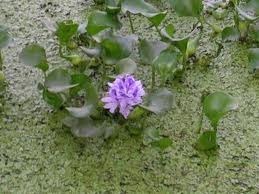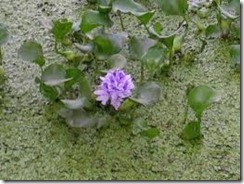Several species of the water hyacinth are common in rivers, ponds and lakes through the Americas. Gardeners often decorate domestic ponds with this flowering, floating plant. Despite its aesthetic appeal, the water hyacinth causes severe problems in U.S. waterways.
Overgrowth
-
Water hyacinths are native to South America but thrive in the U.S. as an exotic species. While they are not as immediately dangerous as other exotics, they are hardy and reproduce quickly. Left untended, a small group of hyacinth plants can spread across a pond or river within months. As hyacinth plants dominate an ecosystem, they cause several more serious problems.
Damage to Waterways
-
The U.S. government bans the distribution of anchored water hyacinths, one of four species of the plant. Florida, among other states, also bans the common water hyacinth that thrives in almost every state. As hyacinth plants reproduce and fill up a narrow body of water, their roots tangle together and form a mat. Anchored hyacinths are the most likely to mat, as they root themselves rather than float on the water.
Damage to Ecosystem
-
In addition to clogging waterways and preventing boat travel or water flow, hyacinth can permanently damage an ecosystem. Hyacinths strangle out competitors as they grow, and their broad leaves block sunlight from reaching the water. Once they cover the surface of a pond or river, the animal life beneath dies and the habitat collapses.


Deprecated: strpos(): Passing null to parameter #1 ($haystack) of type string is deprecated in /home/agriviek8Qv/agriviet.net/public_html/wp-includes/comment-template.php on line 2522